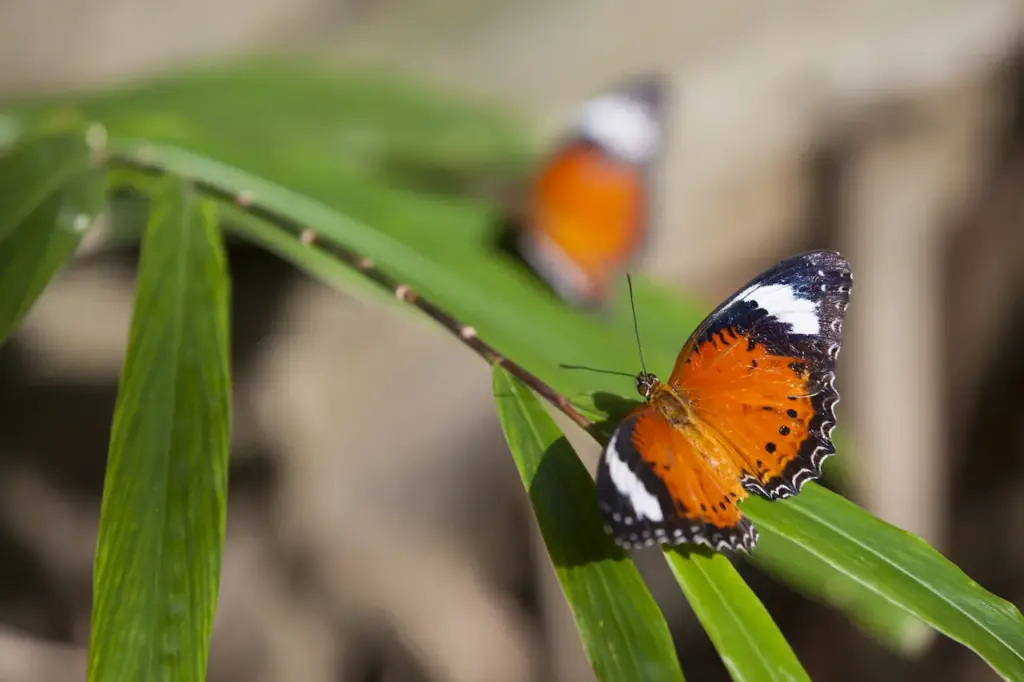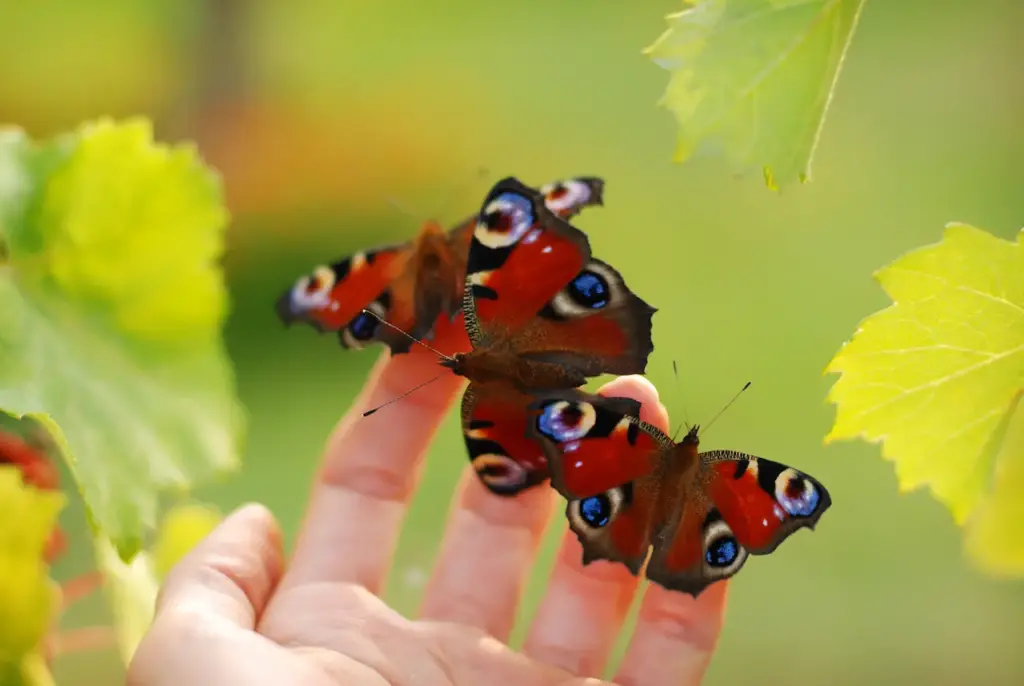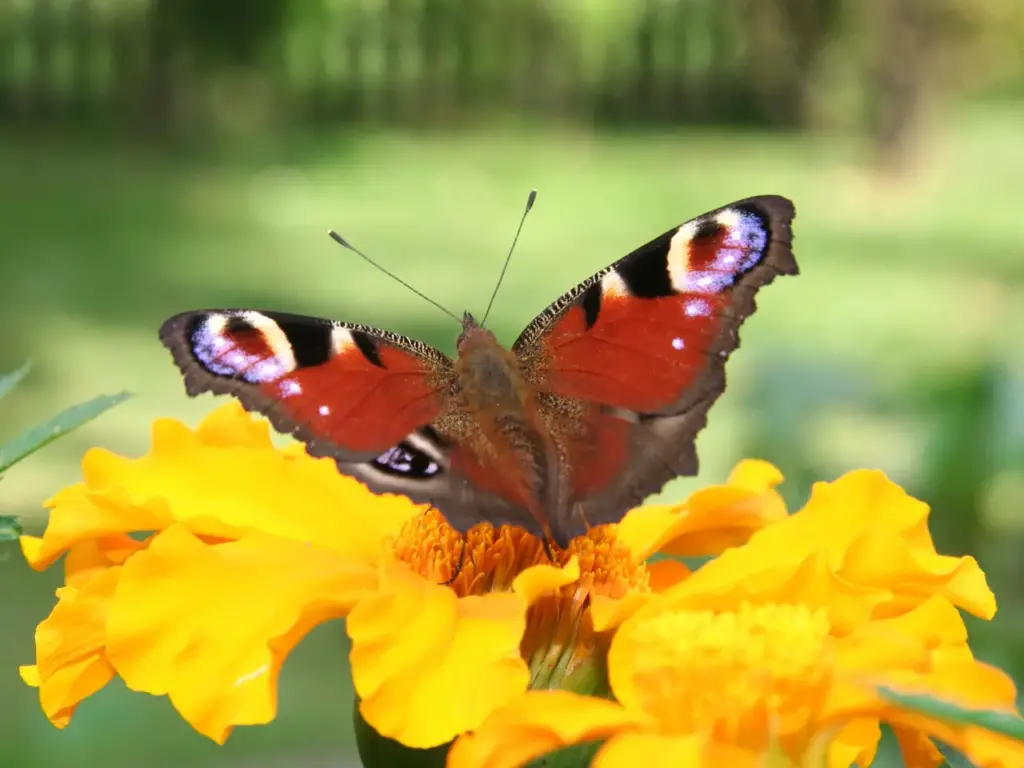What Eats Butterflies?
Categories
- Accipitridae (1)
- Acrididae (1)
- Algae (2)
- Alligatoridae (1)
- Amoebidae (1)
- Amphibians (3)
- Anatidae (1)
- Anguillidae (1)
- Arachnids (2)
- Bears (2)
- Big Cats (3)
- Birds (13)
- Bovidae (5)
- Bufonidae (1)
- Camelids (1)
- Cameras (1)
- Canines (13)
- Caridea (1)
- Carnivora (10)
- Castoridae (1)
- Cats (5)
- Cebidae (1)
- Cephalopod (1)
- Cervidae (2)
- Cetacean (1)
- Chondrichthyes (1)
- Crocodilia (2)
- Crustaceans (4)
- Culicidae (1)
- Cyaneidae (1)
- Dasypodidae (1)
- Dasyurids (1)
- Deer (1)
- Delphinidae (1)
- Desktop (1)
- Didelphidae (1)
- Dinosaurs (1)
- Dogs (13)
- Dolphins (2)
- Echinoderms (1)
- Education (10)
- Elephantidae (1)
- Equine (1)
- Erethizontidae (1)
- Erinaceidae (1)
- Farming (1)
- Felidae (5)
- Fish (5)
- Food Chain (31)
- Food Web (2)
- Formicidae (1)
- Frugivore (1)
- Gaming (1)
- Gastropods (1)
- Giraffids (1)
- Great Apes (2)
- Health Conditions (3)
- Herbivore (4)
- Hi-Fi (1)
- Hippopotamidae (1)
- Hominidae (1)
- Insects (10)
- Invertebrates (2)
- Keyboards (1)
- Laptops (1)
- Leporidae (1)
- Mammals (23)
- Marsupials (4)
- Mephitidae (1)
- Microchiroptera (1)
- Mollusks (2)
- Mongoose (1)
- Muridae (1)
- Nocturnal Animals (1)
- Odobenidae (1)
- Omnivore (2)
- Phasianidae (1)
- Phocidae (1)
- Plankton (1)
- Plants (2)
- Primate (1)
- Ranidae (1)
- Reptiles (7)
- Rhinocerotidae (1)
- Rodents (5)
- Salamandridae (1)
- Scarabaeidae (1)
- Sciuridae (2)
- Sharks (1)
- Shellfish (1)
- Sound (1)
- Spheniscidae (1)
- Suidae (1)
- Superfamily Papilionoidea (1)
- Theraphosidae (1)
- What Eats (5)
Butterflies epitomize aerial grace and beauty with their brightly coloured wings fluttering weightlessly between flowers. But despite this ethereal appearance, butterflies must contend with a suite of constant dangers from predators intent on turning them into food.
Both as larvae and winged adults, butterflies form part of the diet of a wide range of animal species. Birds snatch them from the air. Amphibians and reptiles seize the ground. Insects attack them by ambush and parasitism.
In this article, we will explore the varied predators that eat butterflies as well as indirect threats from parasitic insects that end butterfly lives by commandeering their living bodies to nourish their own kind.
Table of Contents
Toggle
Orange Butterflies What Eats Butterflies
Birds that Prey on Butterflies
Many species of birds eat butterflies as part of their diet. Birds that are able to catch and consume butterflies while in flight are specially adapted for feeding on winged insects.
Swallows
Swallows are aerial insectivores, which means they feed on insects while in flight. There are around 90 species of swallows throughout the world. They have long, pointed wings and a wide mouth to easily swoop and catch insects on the wing.
Several swallow species include butterflies as part of their insect diet. Tree swallows, purple martins, barn swallows, and bank swallows regularly feed on small butterflies and moths.
Swallows catch flying insects by opening their mouths mid-flight and using their aerobatic abilities to swiftly change direction when pursuing prey.
Butterflies form an important source of nutrition for breeding swallows who need large amounts of insects to raise their chicks. A barn swallow may eat up to 850 insects per day during nesting season.
Flycatchers
Flycatchers comprise over 300 species of small passerine birds in the Old World and New World that subsist mostly on insects caught on the wing.
They perch quietly while scanning their surroundings. When they spot prey flying by, they dart out to snap up insects in mid-air using their wide, flat bill.
Butterflies make up part of the varied flying insect diet of many flycatcher species. Flycatchers such as the spotted flycatcher, grey flycatcher, Pacific-slope flycatcher, and scissor-tailed flycatcher are all known to eat butterflies.
Their manoeuvrability and quick reflexes equip them to snatch slow-flying lepidopteran species. Flycatchers play an important ecological role in many habitats by helping regulate butterfly populations as part of their position in the food chain.
Robins
Robins belong to the thrush family of birds. They primarily eat worms and insects but will also consume fruit and seeds.
Although they mainly catch insects hopping along the ground, robins will also snatch slow-flying butterflies and moths out of the air and have the advantage of incorporating them as part of their diet.
The American robin, black robin, and European robin have all been observed feeding on butterflies. Robins patrol open habitats, watch for movement and have the quick acceleration to seize passing butterflies.
Caterpillars also form a substantial portion of a robin’s annual insect consumption – up to 500 per day during peak breeding season.
Robins help control butterfly numbers as part of their natural foraging behaviour. And unusually high caterpillar yields may help robins recover after harsh winters or produce larger clutches.
Insects that Prey on Butterflies
In addition to predation by birds, butterflies must also face attack by predatory insects at various stages of their development. Several insect species target both larval and adult butterflies as well as their pupae and eggs.

Butterflies on Palm What Eats Butterflies
Preying Mantis
Praying mantises comprise over 2,000 carnivorous species that mainly eat other insects as their primary food source. Their powerful serrated front legs are perfectly adapted for snaring insects that wander within their reach. Larger mantis species will also pursue flying insect prey.
Butterflies are certainly at risk when traversing areas frequented by foraging praying mantises. Both smaller and larger species have been observed capturing and feeding on butterflies that flew or landed too close while the mantis lies camouflaged amongst foliage, waiting to ambush passing insects.
Once grasped by the barbed raptorial front legs, a butterfly has little chance of escape. The mantis then uses its mandibles to methodically devour the helpless butterfly, turning its soft body parts into easily digestible insect protein.
Dragonflies
Dragonflies comprise ancient aerial insectivores dating back over 300 million years. With their four independently powered wings, they excel at the aerial interception of other insects, including butterflies. The largest dragonfly species will even eat small birds!
Butterflies represent just another insect prey target for continuously hunting dragonflies. Dragonflies patrol territories and zoom after any insects of adequate size.
Slow-flying butterflies and moths are especially vulnerable to dragonfly predation while feeding on flower nectar or searching for host plants.
Once captured in midair after a rapid dragonfly chase, a butterfly is eaten while the dragonfly continues to fly. The dragonfly’s sharp mandibles pierce the butterfly’s body to anchor it while other mouthparts macerate the soft tissues.
Ants
Ants comprise more than 12,000 ant species worldwide. Although omnivorous in general, some ant species have specialized adaptations for preying on larvae of moths and butterflies.
These especially include army ants that exhibit group raid behaviour to attack and consume caterpillars.
Army ant groups contain specialized worker castes for defence, hunting, and dismantling prey. Raiders flush out hidden larvae and then immobilize their target using venomous stings, allowing other workers to carry the subdued caterpillars back to the nest.
There, the living captives are meticulously picked clean by dedicated dismemberment teams before being fed to ant larvae.
Butterfly larvae are unable to escape the relentless advance and ruthless efficiency of these vicious insect predators. Ants may ravage over 90% of lepidopteran larvae from areas through which their phalanx columns migrate.

Close-up of a Red Butterfly What Eats Butterflies
Amphibians and Reptiles Predatory on Butterflies
In addition to aerial attacks by birds and insects, grounded butterflies may suffer a different fate once within reach of hungry amphibians and reptiles.
Toads and Frogs
Toads and frogs use a “sit and wait” strategy for catching insect prey that wanders near while they remain cryptically still.
Their long, sticky tongues allow for quick grabs at nearby butterflies where they land to rest upon low vegetation.
And floating adult butterflies that gracefully dip to sip at mud puddles also risk becoming quick amphibian snacks.
But perhaps the greatest dread butterfly threat comes from the abundance of nearby frog and toad tadpoles.
Caterpillars that fall into waterways often cannot escape the underwater ambush as scores of lurking tadpoles overcome their frantic efforts to swim away by engulfing them within an instant scrum of gulping mouths.
Butterflies that avoid plunging into tadpole-infested waters and evade adult amphibian tongue strikes may survive to continue their life cycle.
Lizards
Various agile lizard species feed on insects, including unwary butterflies and larvae that fall within the range of an abrupt attack.
Fast-moving species like eastern fence lizards actively pursue insect prey, while slower ambush specialists such as chameleons and horned lizards patiently await nearby insect activity.
Butterflies incautiously feeding too close risk being snatched up by a veiled chameleon’s rapidly extending sticky projectile tongue or knocked stunned by the blast of a hooded basilisk lizard before being secured within the jaws.
Larvae and pupae are also readily devoured whenever encountered by foraging lizards. Speedy butterflies that escape chameleon tongues can still suffer attacks by quicker lizard hunters, such as blue-tailed skinks capable of short, rapid sprints.
Conclusion
Butterflies face threats from predators and parasites during all phases of their life cycle. Birds snatch adults from the air.
Insects like mantises and dragonflies overwhelm them by ambush. Amphibians and reptiles dispatch grounded butterflies and larvae.
And specialist wasps and flies strike at caterpillars by hijacking them as reproductive hosts for their own offspring.
The extreme diversity of butterflies has emerged only due to their equally elaborate adaptations for both avoiding and tolerating these various natural enemies.
